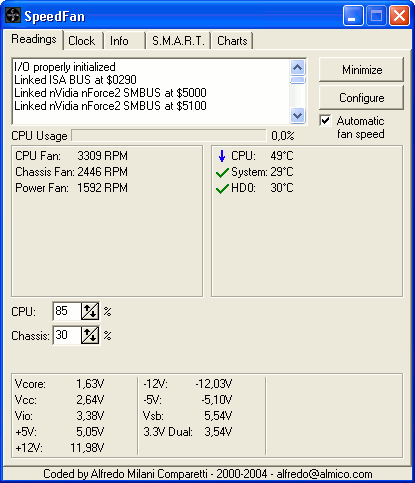Don’t worry, you’re not the first or only one to face this problem!
CPUs can act crazy sometimes due to a lot of reasons, like overheating when there’s no processing going or games being run.
So in this article, we’re going to find out together what could be the reason behind why your CPU temperature jumps up and down!
Are CPU temp spikes normal?
Some people will say that a CPU temp spike is normal. However, if the change in temp occurs rapidly, then this may not be true. For example, a CPU might jump from 80°C to 90°C and back down to 80°C again repeatedly. The rapid changes in temperature can cause physical damage to the CPU or motherboard if it continues over an extended period of time.
What are some things I can do to help keep my CPU temperature at a stable level?
The things you can do to maintain a stable CPU temperature are as follows:
- Clean the computer case and vents
- Uninstall any programs or applications that automatically start when your computer boots up. These may be overloading your processor.
- Make sure the computer is not in a drafty area, away from air vents, and in the most heated part of the room.
- Have your fans cleaned once a year to ensure proper airflow.
What should I do to reduce my CPU temperature?
This is not a problem for some people, but some of us are trying to find ways to cool down the CPU.
Some people say that they keep their laptops on the floor so the air can easily circulate around them, Others say they use an external fan in order to dissipate heat more quickly.
Some easy ways to lower your CPU’s temperature are:
- Turning off your computer or laptop when not in use.
- Keeping your computer in a cool place such as an air-conditioned room.
- Taking your laptop off of the surface you are using it on, and place it on a cooling pad.
What is the best way to monitor your CPU temperature?
Many people wonder how to check if their CPU is overheating. One way to check your CPU temp is by using a software utility like SpeedFan.
To do this, first, make sure your system has all the drivers installed for the hardware on your PC. Then, run the program and hit “start monitoring.” You can also find SpeedFan by going to Control Panel –> System –> Hardware tab–> System Protection tab –> Performance Options –> Processor Scheduling. Once you have set it up, go to the “general” tab and select both options for “interval” (5 minutes). Once it starts monitoring, you will see a graph of CPU load and temps in degrees Celsius that are both updated every five minutes.

You can also use Speed Controller CPU Temperature Sensor which will keep the temperature down and workable.
How to optimize CPU usage?
One of the most important things you can do to keep your CPU running at its best is to make sure it stays cool. This will not only prevent potential damage, but also allow your CPU to operate at maximum performance. One thing that may help you out is setting a max temperature for your computer before it starts shutting down apps or processes in order to keep things cool.
You can do this by using the same program we mentioned before, SpeedFan, and configuring your computer so that if it gets above a certain temperature, the fan on your CPU will spin faster to cool it down.
What should CPU idle temp be?
Many people may think that the CPU idle temp should be about 30 degrees Celsius. That was common a few years ago, but not anymore. The CPU idle temp is getting higher and higher with the advancement of technology. One thing to note is that these temperatures can jump up and down rapidly. This is usually because there are many tasks being run at the same time or because of changes in air temperature due to seasons.
What is a good CPU temp range?
A recent study found that the “best CPU temperature” is a range between 10-30 degrees Celsius (or 50-85 degrees Fahrenheit).
During the study, researchers found that when the CPU temperature jumps up and down, CPU temp changes rapidly, or the CPU temp is unstable, it can cause errors in computer programs.
Computer errors can cause crashes and data loss.
PS. It’s important to make sure you replace your computer fans before they go bad. Otherwise, your computer will overheat and shut down unexpectedly without warning.
How to know when your PC is idle?
When your computer is idle, its CPU should be below 60 degrees Celsius. If the temperature goes above this, then it’s likely that your PC is not properly shut down or is running unnecessary processes.
A lot of gamers or computer enthusiasts have a basic understanding of how the CPU operates and will know that when their CPU changes rapidly from high to low temperatures that there may be a problem with the cooling system.
The CPU temperature should not jump from 34°C to 70°C on a regular basis. If you notice these spikes in your thermometer and they happen for more than an hour at a time, then it’s likely that you need to replace your heatsink or thermal paste for better performance.

“Turning off your computer or laptop when not in use.” – Is this really a tip on how to cool your CPU temperature?